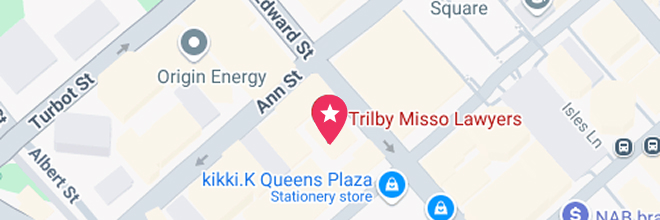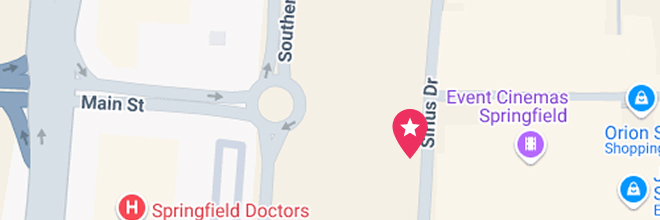Our Brisbane CBD Office
- Suite 400, Level 4/288 Edward St, Brisbane City QLD 4000
- (07) 3910 5470




If you’ve been injured at work, chances are you’ve found yourself asking: How much will I actually get from workers’ comp?” While the system is designed to support injured workers, there’s no single fixed amount. Your compensation will depend on a mix of factors like how bad the injury is, how long you’re off work, and whether your employer was at fault.
This guide breaks down how workers’ compensation payouts are calculated, the types of payments you might receive, and average figures based on recent data — with a focus on Queensland’s WorkCover system, but also insights from other states.
A workers’ compensation payout isn’t just one payment — it’s usually made up of several parts depending on your injury and situation:
Weekly compensation – wage replacement while you’re off work
Medical and rehabilitation expenses – bills for treatment and recovery
Lump sum for permanent impairment – if your injury leaves lasting damage
Common law damages – if your employer’s negligence caused your injury
Each of these is assessed separately and can vary based on your case.
If you’re unable to work due to your injury, you’ll receive weekly payments to cover lost wages. In Queensland, these are usually:
85% of your normal weekly earnings for the first 26 weeks
75% for the following period
Reduced again after two years, depending on capacity and award type
These payments are capped based on Queensland’s Ordinary Time Earnings (QOTE), meaning high-income earners may receive less than their full pre-injury wage.
WorkCover (or your state’s equivalent) pays for reasonable and necessary medical treatment, including:
GP and specialist appointments
Surgery and hospital stays
Physiotherapy and rehabilitation
Prescription medications
Psychological treatment (if required)
You don’t usually receive these payments as cash – they’re paid directly to your providers or reimbursed to you. If your injury is serious, these costs can add up to tens of thousands of dollars or more.
If your injury results in long-term or permanent effects, you might be assessed for a Degree of Permanent Impairment (DPI). This is done after your condition stabilises.
You’ll be assigned a percentage rating (e.g. 5%, 12%, etc.) based on how much the injury has affected your body. The higher the percentage, the higher the statutory lump sum you’re offered. In Queensland:
A 1% DPI might result in a few thousand dollars
A 20% DPI or higher could reach six figures
The maximum payout for 100% impairment is about $398,000
Not everyone receives a lump sum — only those with lasting impairment.
In some cases, your injury might have been caused by negligence, such as unsafe work practices, faulty equipment, or lack of training. If so, you may be eligible to make a common law claim.
This is a separate legal claim that compensates you for:
Pain and suffering
Loss of future income
Loss of superannuation
Future care or support needs
These claims often result in much higher payouts, but you need to prove fault. Many workers choose to pursue these claims with help from a no win no fee lawyer.
| Claim Type | Average Payout Range | Details |
|---|---|---|
| Statutory Claim | $5,000 – $50,000 | Covers wages and medical expenses only. Amount depends on time off work and injury severity. |
| Lump Sum (Permanent Impairment) | $5,000 – $25,000 (minor injuries) $50,000 – $150,000+ (serious injuries) |
Based on level of permanent impairment. Higher severity leads to larger lump sum. |
| Common Law Settlement | $180,000 average $250,000 – $400,000+ (for serious cases) |
Includes general damages, economic loss, and legal costs. Some cases exceed $400,000. |
The average payout can vary widely depending on injury severity and whether common law is involved. A statutory claim is generally the lowest tier, covering lost wages and medical costs with relatively modest payouts. If the injury results in permanent impairment, a lump sum may be assessed based on the degree of impairment. For those who pursue a common law claim due to employer negligence, payouts tend to be significantly higher. For example, someone with a serious spinal injury might receive over $300,000, while a worker with a sprained ankle and full recovery may only receive compensation for a few weeks’ wages and basic physiotherapy. The pathway taken and the type of injury make a significant difference in the final compensation amount.
| Injury Severity | Examples | Time Off Work | Permanent Impact | Typical Payout Range |
|---|---|---|---|---|
| Minor Injuries | Sprains, cuts, light strains | 1–4 weeks | Little or none | $2,000 – $10,000 |
| Moderate Injuries | Fractures, herniated discs, psychological injuries | 1–6 months | May include impairment rating | $15,000 – $100,000 |
| Serious Injuries | Permanent back injury, brain injury, multiple surgeries | Long-term or permanent | Common law claim likely | $150,000 – $500,000+ |
These are only indicative figures, based on Queensland trends. Payouts in NSW, VIC, and other states follow similar structures but can differ in caps and step-downs.
The timeline depends on the complexity of your case.
Weekly payments often start within 1–2 weeks of claim approval
Medical costs are paid as needed
Lump sum offers come after recovery stabilises (can take 6–12 months)
Common law claims usually take 12–24 months to settle
Most minor claims resolve quickly, while serious injuries can take years to finalise.
Yes — if your mental health condition was caused by or significantly worsened by your job, you may be eligible for compensation. Common examples include:
Psychological injury from bullying or harassment
PTSD from a traumatic event
Anxiety or depression due to work-related stress
Mental health claims are assessed carefully and may require extra evidence. They can lead to similar compensation as physical injuries, including wage replacement, treatment, and potentially lump sum offers for permanent conditions.
No, each state and territory runs its own scheme. While the structure is similar across Australia, the fine details differ.
Key differences include:
Weekly payment rates and durations
Caps on impairment and lump sums
Thresholds for common law access
Process for assessing impairment
For example, in NSW you might receive 95% of pre-injury earnings early on, compared to 85% in QLD. Some states have tighter rules around suing for damages. Still, all systems aim to ensure support for injured workers.
Understanding what you’re entitled to isn’t always easy — especially with longer-term injuries. While you don’t need a lawyer for every claim, legal guidance can help with:
Disputed claims or rejected applications
Impairment assessments and lump sum offers
Exploring negligence or common law options
Ensuring all entitlements are paid properly
How much compensation do you get for a back injury at work?
Back injury payouts range from $10,000 for minor cases up to $300,000+ for severe, long-term injuries, depending on time off, treatment, and permanent damage.
Will I still get paid if WorkCover rejects my claim?
If your claim is rejected, you won’t receive weekly payments — but you may be able to appeal or seek legal advice to challenge the decision.
Can I claim both workers’ comp and common law damages?
Yes, but only in certain cases. In QLD, if your impairment is under 20%, you must choose one or the other. If it’s over 20%, you may be entitled to both.
Queensland Government – Workers’ Compensation Overview
https://www.qld.gov.au/jobs/entitlements/compensation
Safe Work Australia – National Compensation Statistics
https://www.safeworkaustralia.gov.au/doc/australian-workers-compensation-statistics-2020-2021
WorkCover Queensland – Claims Process
https://www.worksafe.qld.gov.au/claims-and-return-to-work/workers
Workers’ compensation payouts in Australia can range from a few thousand dollars for minor injuries to hundreds of thousands for severe, long-term cases. In Queensland, the WorkCover system provides structured support through weekly wage replacement, medical treatment, and potential lump sums — with additional compensation possible through common law claims if negligence is involved.
How much you receive depends on your income, time off work, medical needs, and the lasting impact of your injury. Every claim is different, but understanding how the process works gives you the confidence to take the next steps. And with no win, no fee arrangements, there’s no cost to get advice if your situation gets complex.
Kathryn is Trilby Misso’s Chief Executive Officer.
Meet KathrynUse this simple online tool and find out if you have a claim in less than thirty seconds. You can choose to remain anonymous.
Your next step is a small one. All you need to do is give us a call on 07 3910 5470 or complete this form here to arrange a quick chat.
During this initial conversation, we will:

We understand that taking legal action can be stressful, and we’ll do all we can to ease your concerns.
The chat can take place at our place, your place, or by phone. There is no cost, no pressure, and no obligation.
Call 07 3910 5470 or fill out this form, and we’ll get back to you within 2 hours (during business hours). We look forward to meeting you.
enquire now